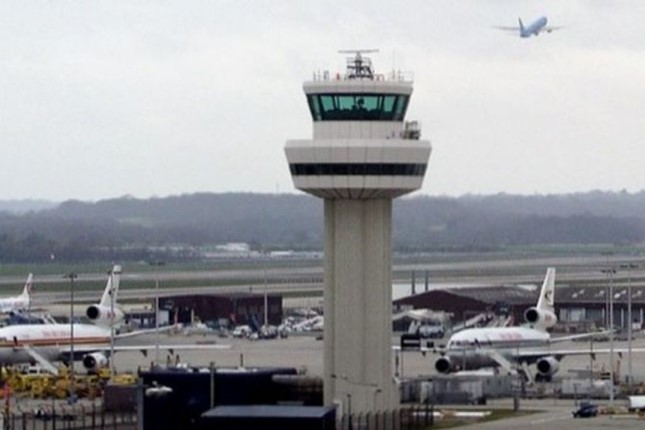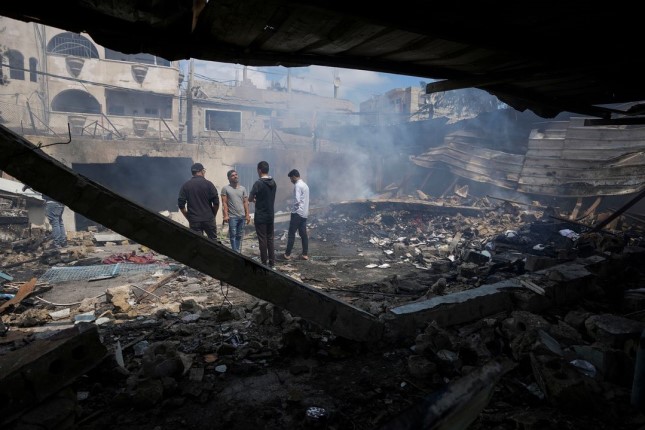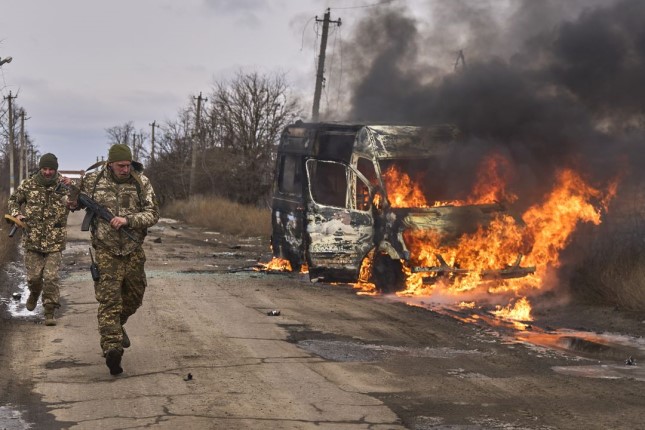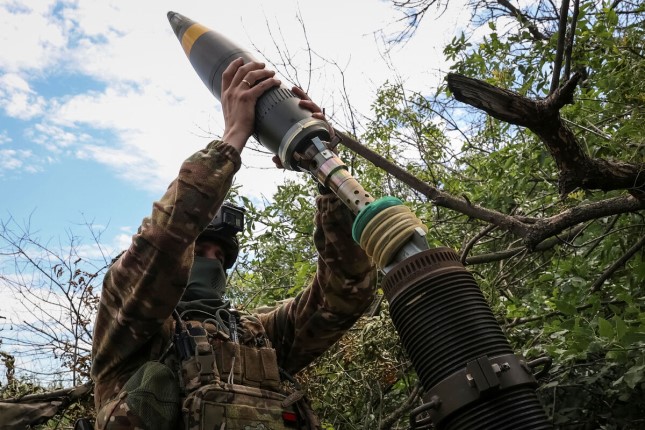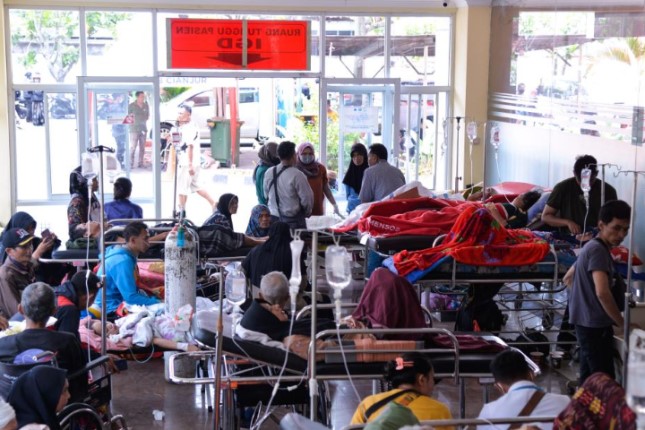Widespread absences due to sickness among staff responsible for air traffic control meant that the airport, Britain’s second largest, was forced to limit the number of flights taking off or landing to just 800 each day, from Monday to Sunday.
This resulted in 164 flights being cancelled, with an estimated 25,000 passengers affected. According to National Air Traffic Services (NATS), as many as 30 percent of air traffic control staff were reported to be ill after an outbreak of COVID-19.
This was not the first time that Gatwick had to cancel flights last month. On September 14, 22 flights were cancelled, again due to short-notice staff absences in the air traffic control team. A “flu-like” illness was cited as the cause then. It is highly likely that was also due to COVID-19.
This latest outbreak comes as a new wave of COVID that started during the summer continues to impact the population. According to the ZOE Health Study app, which tracks cases based on reports from the public, there are currently an estimated 1.2 million symptomatic COVID cases in Britain. This is double the low point of 600,000 recorded at the beginning of July. There were 3.8 million cases recorded by ZOE at the peak of the Omicron surge in spring 2022.
Daily cases are on the rise, with 97,000 reported just on September 27. Since ZOE only counts cases where someone had a test (either PCR or lateral flow) and self-reported it, the count must be considered an underestimate. Free testing was wound up last year, after the Conservative government declared the end of the pandemic. The government’s own dashboard that records only cases where tests were administered in hospitals, recorded just 12,187 cases in England in the week ending on September 23 (still up 13.7 percent compared to the previous week), about an eighth of the ZOE figure, itself an undercount.
According to the government recent weeks have seen the test positivity rate shoot up to as much as 16.8 percent, also suggesting a significant number of cases go unreported.
The number of hospitalisations has increased to 3,047, up 10 percent from the previous week. Deaths, which lag behind infection numbers, have also started to increase, with 229 COVID fatalities in the week ending September 15.
The Eris variant (EG.5.1) is now dominant in Britain, with 31 percent of sequenced cases between September 11 and 17, followed closely by Arcturus (XBB.1.16) and XBB at 30 percent each. The new “Pirola” variant (BA.2.86), over which scientists are sounding the alarm due its ability to evade previous immunity, accounts for 1 percent of sequenced cases. According to figures from the UK Health Security Agency, there have been 54 confirmed cases of Pirola in the UK (48 in England and six in Scotland). The body said that “sporadic” cases of the Pirola strain are being found “in most regions”.
Most Pirola cases occurred at a care home in Norfolk, where 33 out of 38 (87 percent) residents were infected over a 2-week period, with nine requiring hospitalization. A recent report on the outbreak highlights the fact that it had a much higher attack rate and severity of symptoms than similar previous outbreaks, despite relatively recent vaccinations (88 percent of residents had had a booster in the past four months). Though none of the residents died from the infection due to the prompt response of the care home staff, this episode highlights the seriousness of Pirola, as well as the danger of letting the virus mutate indefinitely.
The detection of BA.2.86 in August prompted the Conservative government to bring forward its autumn vaccination campaign, which only covers those aged over 65 and others considered most clinically vulnerable. It is unclear how much protection any booster jabs would offer against the new variants. So far, the ability of the virus to mutate has outpaced the development of new vaccines. The vaccination campaign is the first to feature a new Pfizer vaccine designed to counter the XBB.1.5 variant, which was the dominant version during the Omicron surge last winter, but now accounts for just 5.2 percent of cases.
The ongoing COVID wave will be amplified by the start of the new school year. Millions of children started school at the beginning of the month in buildings with no mitigation measures at all, despite UV lighting and air filters being proven to work. So many children in a closed environment provide the perfect setting for the virus to spread, first in schools, and then in the wider community. This is compounded by government advice that encourages parents to send their kids to school if they have “mild symptoms, such as a runny nose, sore throat, or slight cough, and feels well enough”.
Confirming a deliberate policy of mass infection, the guidance stresses that children are not required to be tested. Even if they have symptoms the government also advises that if they do test positive they should stay home for just three days, so they will return while still being infectious to others.
There are numerous reports on social media of many school staff being off sick “with flu-like symptoms”. This despite the governments respiratory disease dashboard showing virtually no cases of flu now.
This week Uppingham Community College in Rutland was forced to close three-year groups due to a “rapid spike” in COVID cases. Leicestershire Live reported the comments of headteacher Ben Solly who wrote, “Last week, a headteacher of a school in Leicester asked me about levels of Covid at UCC, as his school was struggling, and I naively responded that we hadn't really felt any impact. I should've kept my mouth closed because we have been overwhelmed this week, as it spread across our teaching staff.”
He told the Rutland & Stamford Sound, “It feels quite strange… I did think this was all behind us, to be honest. It kind of snuck up really, really quickly out of nowhere this week. The staff have been dropping like flies, we're up to 17 positive confirmed cases now amongst teachers.”
The headteacher concluded, “I felt more like a supply teacher this week than a headteacher. We've done everything we possibly could do to keep the wheels turning, but we got to a point where it was starting to feel unsafe with the level of absences we had and which was coming.”
The wave of COVID in Britain is part of a global upsurge in the virus. Schools in the US started the academic year shortly before Britain. Due to the widespread transmission of COVID, schools in several states were compelled to shut down.
The increasing spread of the virus has cut across government efforts to present the disease as “endemic” and something that people can just live with, like the cold or flu.
There has been a concerted effort in the mainstream media to play down the effects of the disease. In the Guardian article covering the cancellation of flights at Gatwick, the word “COVID” did not appear anywhere, despite being cited by an airport spokesperson as the main cause of the crisis. In the same vein, BBC News dedicated a large part of its article on the new COVID variant to promoting the idea that workers should just “live with the virus”. It cited Dr. Adam Finn saying, “There's no real value in investing a lot of time and effort immunising them [people under 65 years old] again when there are so many other things for the health service to be doing.”
The article borrows from the discredited “herd immunity” playbook, stating, “The reality is then that most under-65s will now end up boosting their immunity not through vaccination, but through catching Covid many times.”
Letting the virus spread uncontrollably is a criminal policy that has already resulted in the needless death and disability of millions of people. This was reinforced in a new study published in The Lancet Respiratory Medicine. Based on 250 patients that were treated for COVID in hospital, it showed that people suffering from Long Covid had higher rates of damage to multiple organs, including the lungs, brain, and kidneys. Lung injuries were almost 14 times higher among Long COVID patients, while abnormal findings involving the brain and kidneys were three and two times higher respectively.
Dr. Margaret O'Hara, a founding trustee of Long COVID Support, remarked “It is abundantly clear now that it is not simply a respiratory virus and that it is causing long term harm to the health of individuals throughout the population, including the huge numbers of people who were not hospitalised in the acute phase of infection.”
Photo: Gatwick Air Traffic Control tower. Seen from passenger footbridge between North Terminal and Pier 6 satellite building © geograph.org.uk / CC BY-SA 2.0.
Source: World Socialist Web Site.
